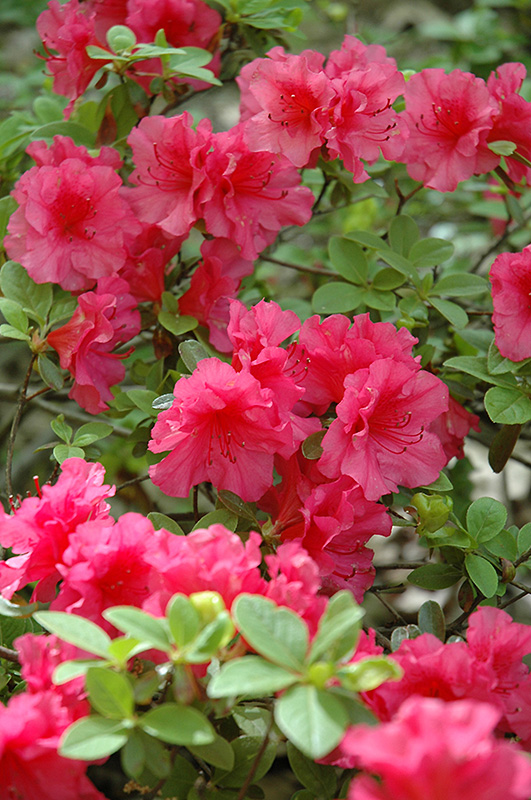Height: 5 feet Spread: 5 feet
Sunlight:
Hardiness Zone: 6a Group/Class: Girard Hybrids Description: Attractive pink blooms with cherry red eyes adorn this elegant variety in mid spring; leaves are small, creating a fine overall look, it will definitely make an impact along borders; absolutely must have well-drained, highly acidic and organic soil Ornamental Features Pink Dawn Azalea is covered in stunning clusters of fragrant pink trumpet-shaped flowers with cherry red throats at the ends of the branches in mid spring before the leaves. It has green deciduous foliage which emerges light green in spring. The small glossy narrow leaves do not develop any appreciable fall color. Landscape Attributes Pink Dawn Azalea is a dense multi-stemmed deciduous shrub with an upright spreading habit of growth. Its relatively fine texture sets it apart from other landscape plants with less refined foliage. This is a relatively low maintenance shrub, and should only be pruned after flowering to avoid removing any of the current season's flowers. It has no significant negative characteristics. Pink Dawn Azalea is recommended for the following landscape applications; Planting & Growing Pink Dawn Azalea will grow to be about 5 feet tall at maturity, with a spread of 5 feet. It tends to be a little leggy, with a typical clearance of 1 foot from the ground, and is suitable for planting under power lines. It grows at a slow rate, and under ideal conditions can be expected to live for 40 years or more. This shrub does best in full sun to partial shade. You may want to keep it away from hot, dry locations that receive direct afternoon sun or which get reflected sunlight, such as against the south side of a white wall. It requires an evenly moist well-drained soil for optimal growth, but will die in standing water. It is very fussy about its soil conditions and must have rich, acidic soils to ensure success, and is subject to chlorosis (yellowing) of the foliage in alkaline soils. It is somewhat tolerant of urban pollution, and will benefit from being planted in a relatively sheltered location. Consider applying a thick mulch around the root zone in winter to protect it in exposed locations or colder microclimates. This particular variety is an interspecific hybrid.![]()
![]()
![]()
![]()
![]()
![]()
![]()
![]()
![]()
![]()
![]()
![]()
top of page
Louie's Nursery Menifee - Plant Finder
Characteristics
Applications
Features & Attributes
This tool is an online resource representing many of the varieties that we carry over the course of the season, and is intended for informational purposes only. Inventory varies seasonally, so we cannot guarantee that every plant will be in stock at all times - please contact the store directly for current availability. It does not include our entire selection of plants, so be sure to visit our store to see varieties that may not be represented on this list.
bottom of page
